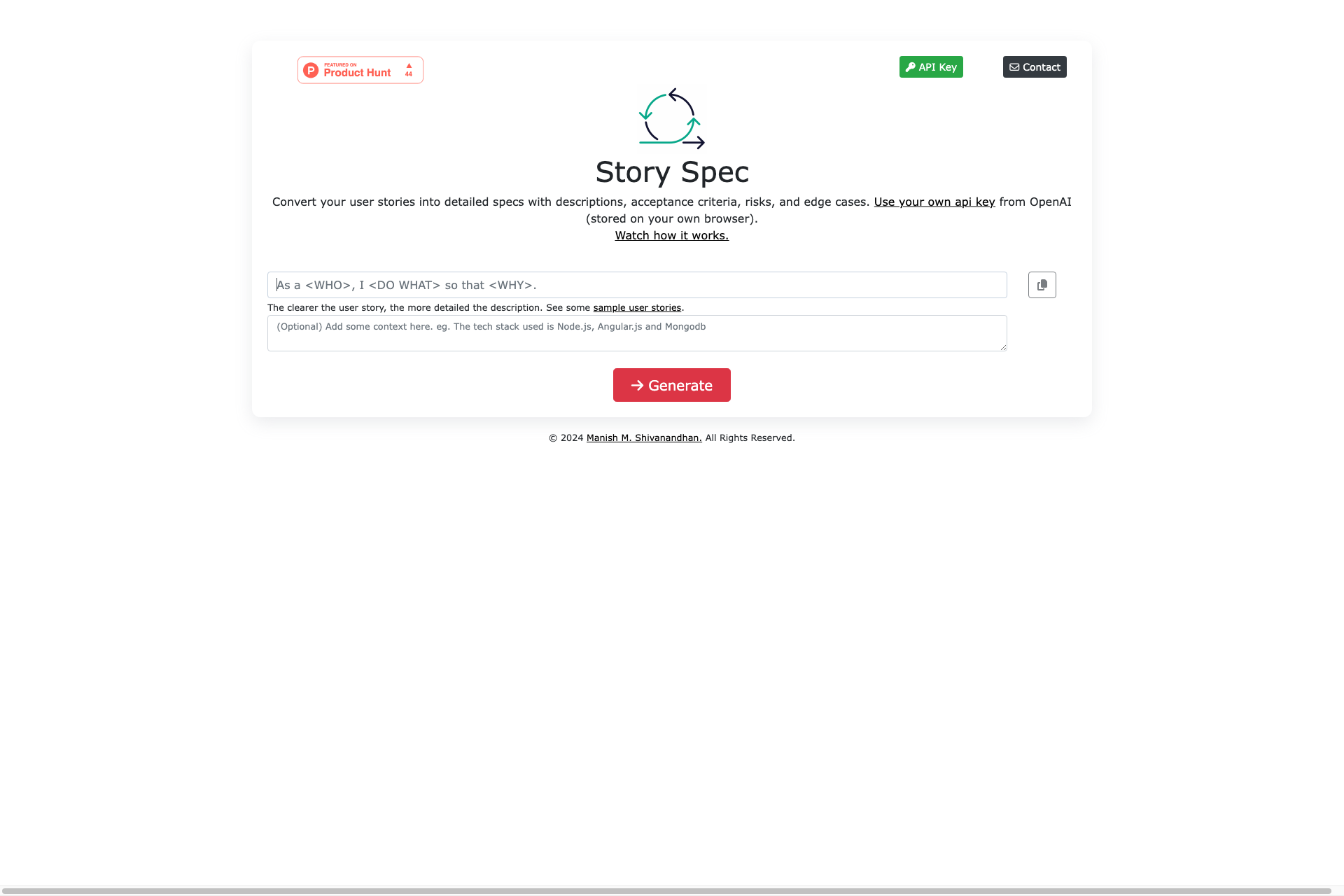StorySpec
Perfect for product managers, developers, QA specialists, and anyone involved in the software development lifecycle. If you're looking to enhance efficiency, clarity, and alignment in your projects, Story Spec is your go-to tool.

Related Products about StorySpec

Wanderboat is a travel platform using AI to find and sort the best point of interest with videos, images, and insights. From signature dishes to photo spots, you can ask questions freely in-chat, in-document, or on-map for personalized travel experiences.

ChatFlow revolutionizes customer support with AI chatbots offering real-time help across digital touchpoints. Features include sentiment analysis, lead capture, and appointment booking for seamless, personalized interactions. Ideal for startups to enterprises.

The simple, cost-effective, & very powerful way to acquire, engage, retain, monetize, and analyze users using Avatars. It takes less than 15 min to integrate our SDK, and you can start earning revenue from Day Free for development, then pay as you go pricing.

The fastest, easiest way to grab the HTML for web pages rendered via Javascript. A must have tool for your next web scraping, RAG for LLM/AI, or other content indexing project.

adversea is your AI-powered partner in the background-check process that helps you identify and assess potential risks from cooperation with individuals or entities.

Accentra offers real-time, AI-driven pronunciation coaching. With native-like accent training and tailored feedback based on your mother tongue, our technology analyzes your pronunciation to verify it and to provide speaking practice for language learners.

Cohesive allows you to enrich your spreadsheet data with AI, web scraping, and email validation. Analyze data, research companies, validate emails, and generate personalizations at scale, all within Google Sheets™.
